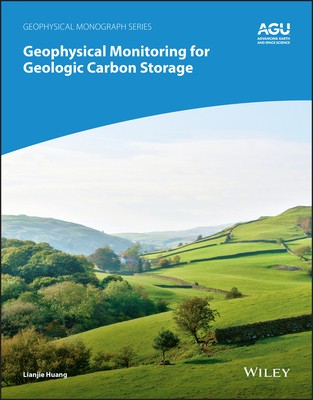
- We will send in 10–14 business days.
- Publisher: American Geophysical Union
- ISBN-10: 1119156831
- ISBN-13: 9781119156833
- Format: 22.3 x 27.9 x 3 cm, hardcover
- Language: English
- SAVE -10% with code: EXTRA
Geophysical Monitoring for Geologic Carbon Storage (e-book) (used book) | bookbook.eu
Reviews
Description
Methods and techniques for monitoring subsurface carbon dioxide storage
Storing carbon dioxide in underground geological formations is emerging as a promising technology to reduce carbon dioxide emissions in the atmosphere. A range of geophysical techniques can be deployed to remotely track carbon dioxide plumes and monitor changes in the subsurface, which is critical for ensuring for safe, long-term storage.
Geophysical Monitoring for Geologic Carbon Storage provides a comprehensive review of different geophysical techniques currently in use and being developed, assessing their advantages and limitations.
Volume highlights include:
- Geodetic and surface monitoring techniques
- Subsurface monitoring using seismic techniques
- Subsurface monitoring using non-seismic techniques
- Case studies of geophysical monitoring at different geologic carbon storage sites
The American Geophysical Union promotes discovery in Earth and space science for the benefit of humanity. Its publications disseminate scientific knowledge and provide resources for researchers, students, and professionals.
EXTRA 10 % discount with code: EXTRA
The promotion ends in 20d.19:55:02
The discount code is valid when purchasing from 10 €. Discounts do not stack.
- Publisher: American Geophysical Union
- ISBN-10: 1119156831
- ISBN-13: 9781119156833
- Format: 22.3 x 27.9 x 3 cm, hardcover
- Language: English English
Methods and techniques for monitoring subsurface carbon dioxide storage
Storing carbon dioxide in underground geological formations is emerging as a promising technology to reduce carbon dioxide emissions in the atmosphere. A range of geophysical techniques can be deployed to remotely track carbon dioxide plumes and monitor changes in the subsurface, which is critical for ensuring for safe, long-term storage.
Geophysical Monitoring for Geologic Carbon Storage provides a comprehensive review of different geophysical techniques currently in use and being developed, assessing their advantages and limitations.
Volume highlights include:
- Geodetic and surface monitoring techniques
- Subsurface monitoring using seismic techniques
- Subsurface monitoring using non-seismic techniques
- Case studies of geophysical monitoring at different geologic carbon storage sites
The American Geophysical Union promotes discovery in Earth and space science for the benefit of humanity. Its publications disseminate scientific knowledge and provide resources for researchers, students, and professionals.


Reviews